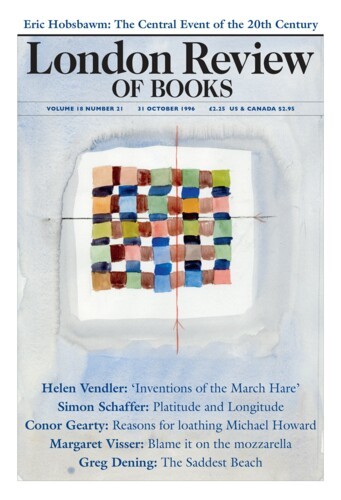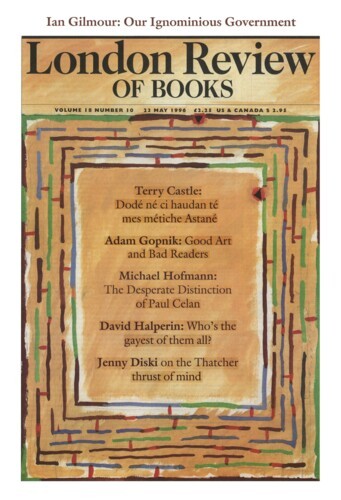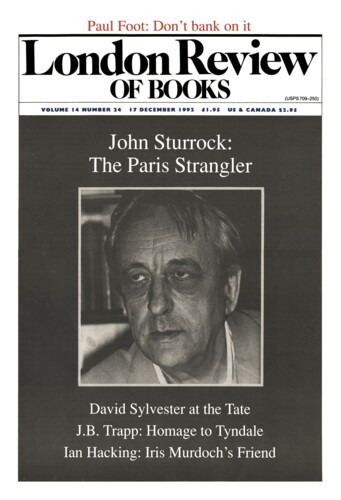Close Shaves
Gerald Hammond, 31 October 1996
The last few years have seen a remarkable surge in studies of the Reformation period and this book by Diarmaid MacCulloch is the piece which completes the jigsaw, putting at the centre of the first half of the 16th century Thomas Cranmer, the archbishop with the beard who created the Church of England. Cranmer’s beard dominates the cover. Instead of the familiar Flicke portrait of a clean-shaven prelate, MacCulloch or his editor (I’d bet it was MacCulloch’s choice) has preferred the inferior and much less attractive portrait preserved at Lambeth House, where his white beard is so emphasised that Cranmer looks more like an Orthodox rabbi than an Archbishop of Canterbury. The beard also figures prominently in the book’s final illustrations, engravings which portray the last hours of his life, his burning at the stake and, just previous to that, two which show the desperate attempts by the Marian hierarchy to suppress his final recantation of his recantation in the University Church at Oxford. One of these illustrations is the official one, as it were, taken from the 1563 edition of Foxe’s Acts and Monuments, in which Cranmer still stands superior to his tormentors, in spite of their attempts to pull him down by his clothes. More dramatic is the alternative engraving of the scene, found in a slightly later book by Foxe’s printer, which MacCulloch suggests was rejected from the book of martyrs, in which a clean-shaven and tonsured monk pulls hard at Cranmer’s beard.



